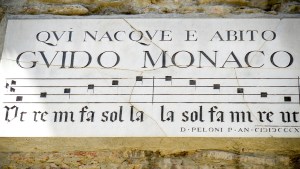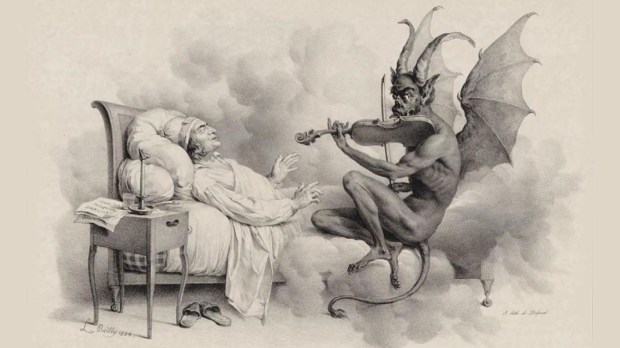Like the devil himself, this musical sequence goes by many names: tritone, triad, flatted fifth, “the devil’s interval,” or “the devil’s chord.” The “diabolus in musica” — “the devil in music,” as it was known for centuries in the original Latin — is a tense-sounding combination of notes that creates a foreboding atmosphere. But explaining the musical theory behind it can be difficult, as perhaps some fundamental knowledge of harmony and counterpoint — not to mention theology — might be required. However, there might be a way to do it without oversimplifying the issue at hand.
This sequence is basically a dissonance, that is, an apparently “unstable” sound that needs to be resolved into a more “stable” consonance. Of course, this doesn’t explain much, as the concepts of dissonance and consonance have changed considerably throughout history. What might have seemed dissonant for Bach was surely not dissonant for Gershwin, but it is also true that even non-initiated musical listeners can identify a “dissonant” sounding note, a “tense” harmony which is not equal to a sound being off-key. If you are wondering what this kind of tension sounds like, just think of your familiar fire engine or police car: if played together, the “wee-woo” siren makes a devil’s interval (also, you might want to recall Jimi Hendrix’s intro to Purple Haze and Camille Saint-Säens Danse Macabre).

Read more:
Why we owe our seven musical notes to John the Baptist
Medieval musicians and theorists understood harmony in music as being in an allegorical relationship with the divine. Since a chord is normally composed of three notes, the pleasant sound produced by it was thought of as a symbolic representation of the unity and trinity of God: three different notes producing a single chord, in perfect harmony. But what if one of those three notes were not “harmonic”? That’s the “diabolus in musica” right there. Although it was never strictly forbidden, even the great Guido D’Arezzo would elaborate some rules regarding when and how should this harmonic sequence be used.
Writing pleasant-sounding music is not too difficult. Take your regular C major scale (that is, just the white keys in the organ), and any two-note chord combination will sound perfectly harmonic. All except for the one that puts together F and B, which produces an unsettling sound that demands some sort of harmonic resolution. This is the reason why, both in the Middle Ages and in Baroque music, this interval was used for technical reasons: to produce and quickly resolve tension, especially when one was writing a musical piece on the Crucifixion —an event of infinite tension that finds a definitive resolution in the Resurrection.

